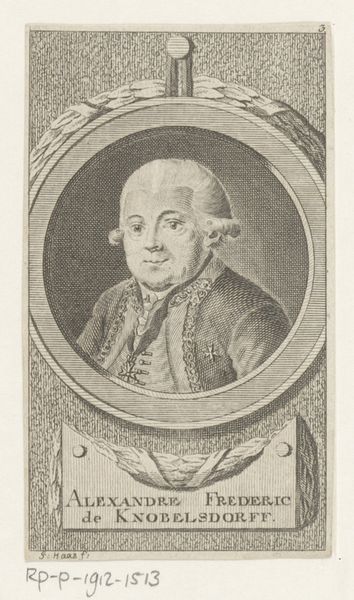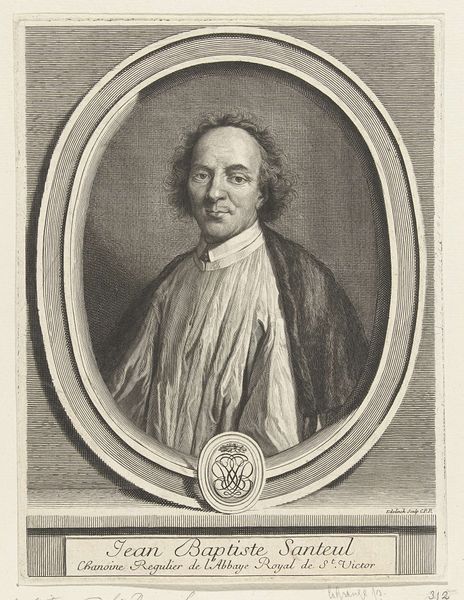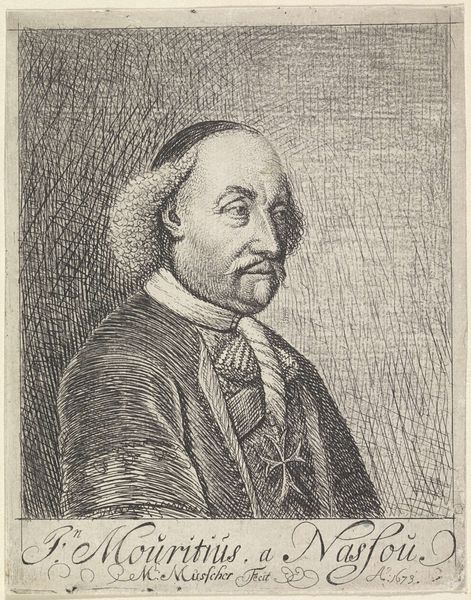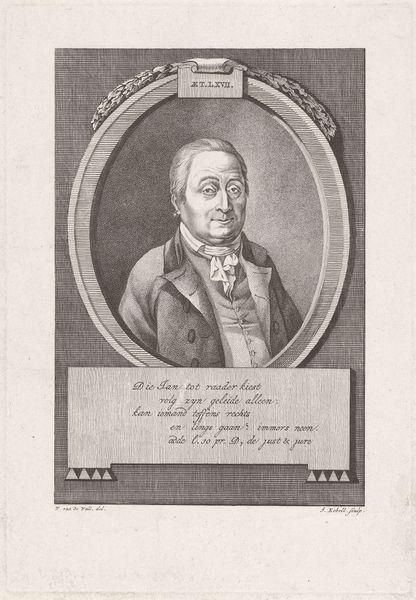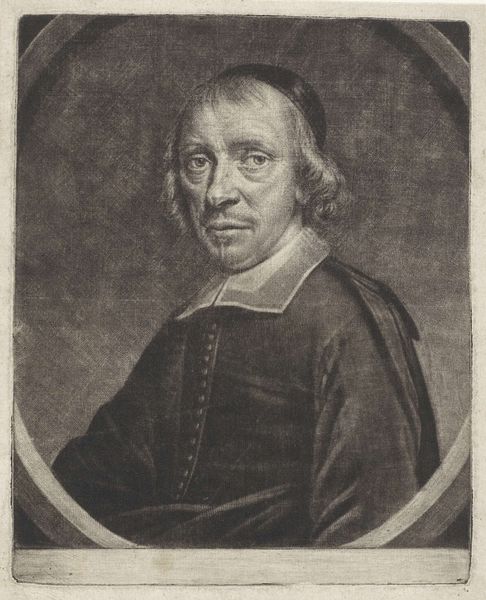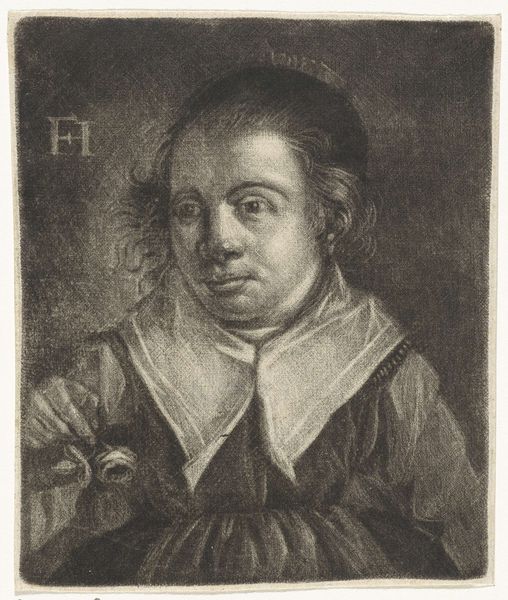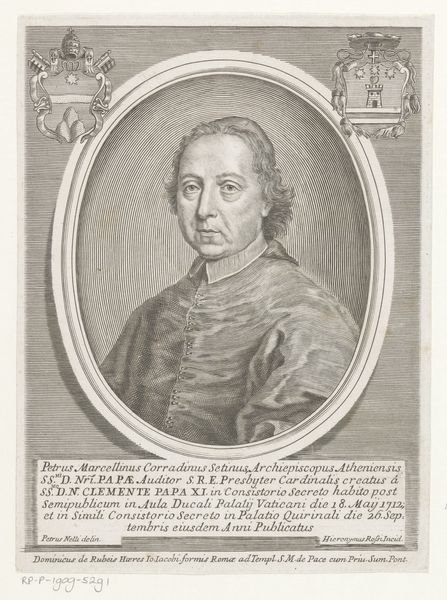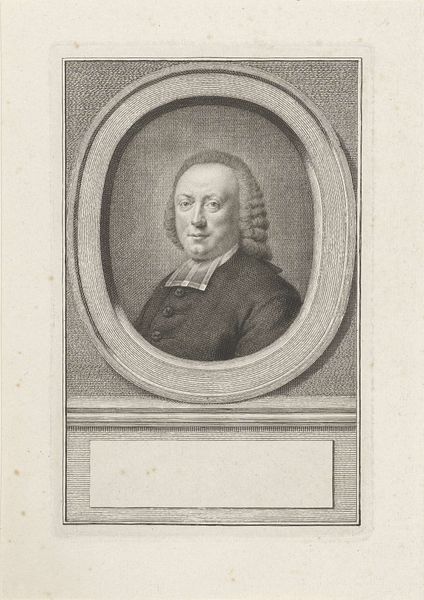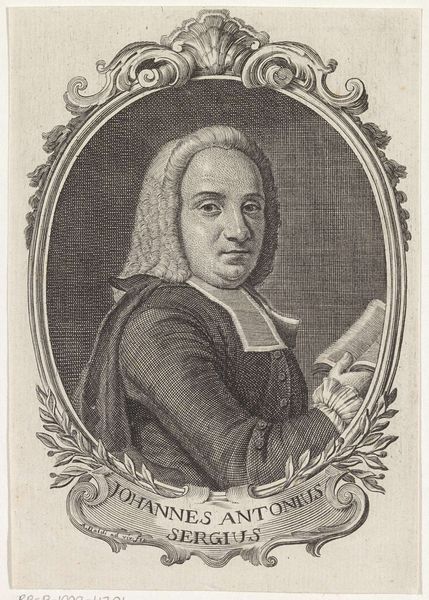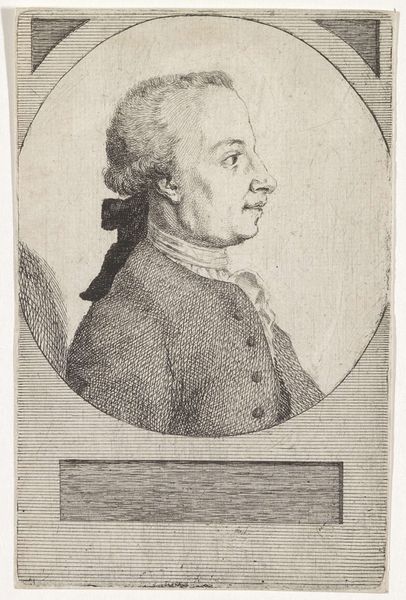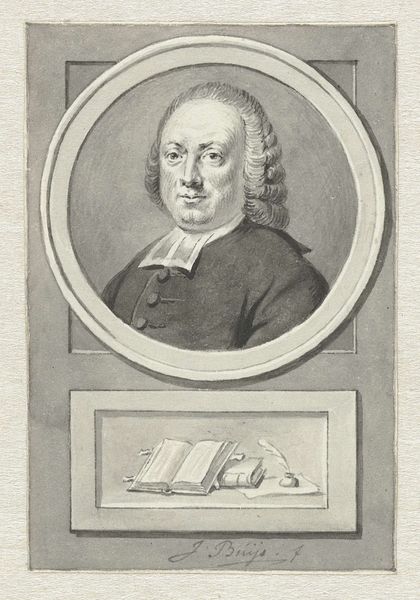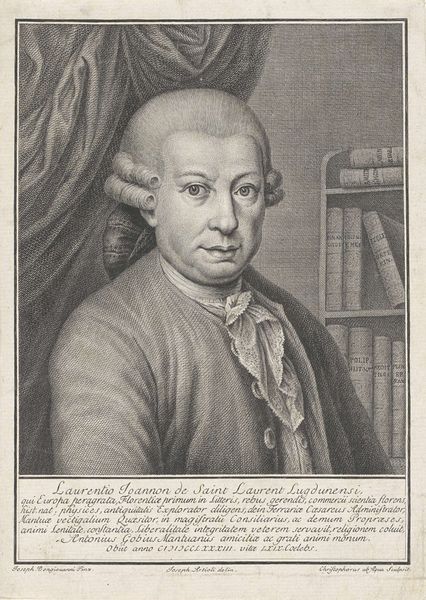
Dimensions: height 192 mm, width 147 mm
Copyright: Rijks Museum: Open Domain
Editor: This is Alessandro Longhi's "Portret van schilder Giovanni Battista Piazzetta," a print created between 1743 and 1813. The detailed lines create a striking portrait, but I can't help feeling a sense of melancholy emanating from the subject. How do you interpret this work? Curator: That's an insightful initial reaction. It is vital to consider that this work exists within the framework of artistic representation of the time, particularly in relation to the portrayal of male artists and their social status. It’s an engraving, a medium often used to disseminate images and ideas. So, who was Piazzetta, and why was it important to create and distribute his image? Consider what values might have been associated with his image during the Italian Renaissance? Editor: I see your point. It wasn't just about capturing a likeness, but conveying something about Piazzetta's role as an artist. It must have been designed to be circulated among the artistic community... but what was its political context? Curator: Exactly. Look at the intense gaze. It communicates a specific kind of authority, and by extension, what an artist’s role was at the time, particularly during the shift from the late Baroque to the early Neoclassical periods. There is a conscious articulation of power at play. To further enhance the artist's persona, what might you infer from his lavish coat? Editor: I see what you mean. The portrait isn't just of an individual but serves as a statement about the artistic class itself. So, the melancholy I sensed might be about a kind of self-seriousness? I suppose I was responding to the emphasis on individual genius that Renaissance artists projected. Curator: Precisely! By analyzing Longhi's decisions as a portraitist and placing them within their historical context, we get a richer, more critical reading of the artwork. This type of close study invites to assess the broader societal constructs shaping artistic representation, the way identities were constructed, and which socio-political agenda it could respond to. Editor: That makes me think differently about portraiture and how much it reflects not just the person, but their world.
Comments
No comments
Be the first to comment and join the conversation on the ultimate creative platform.
